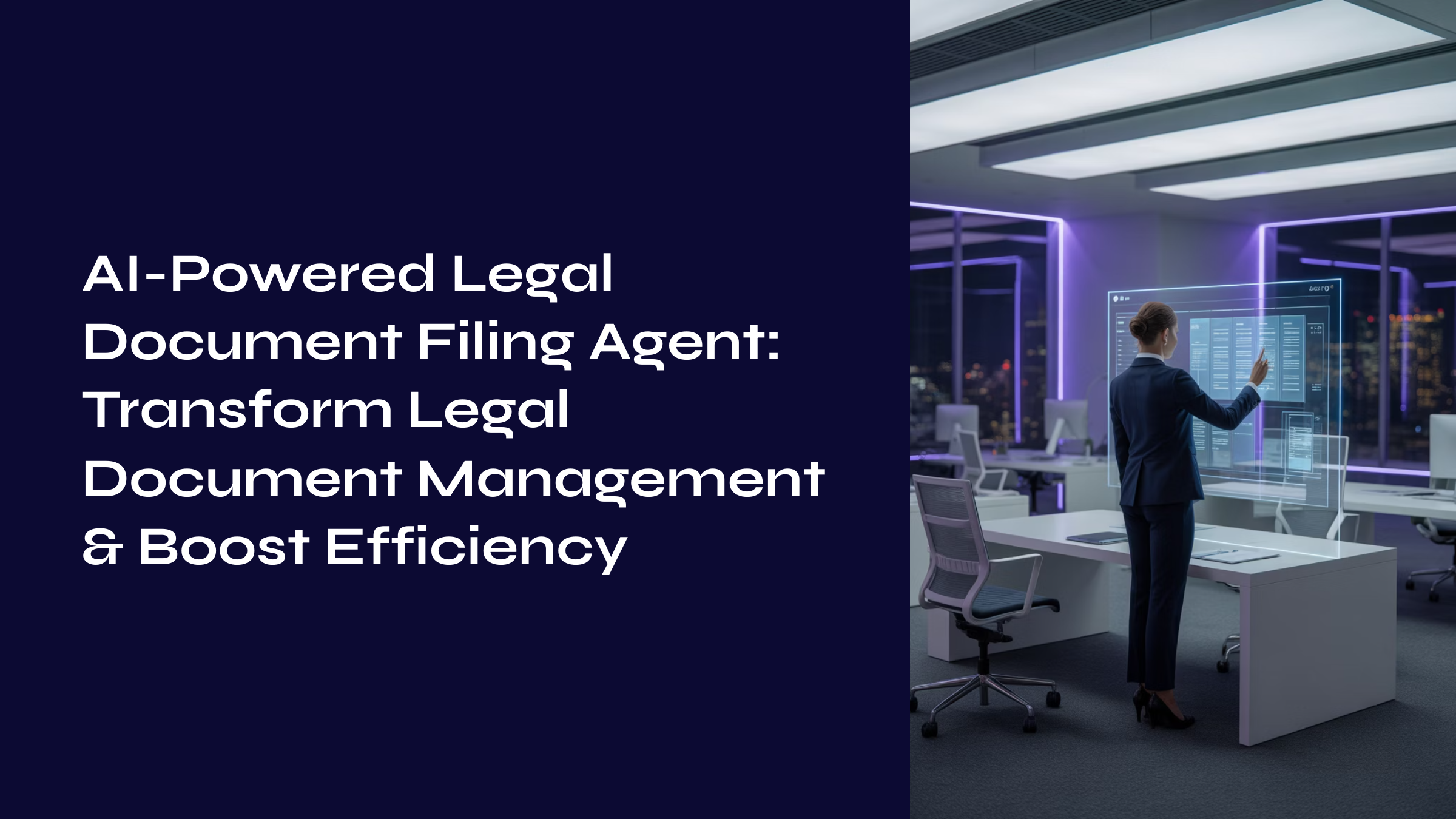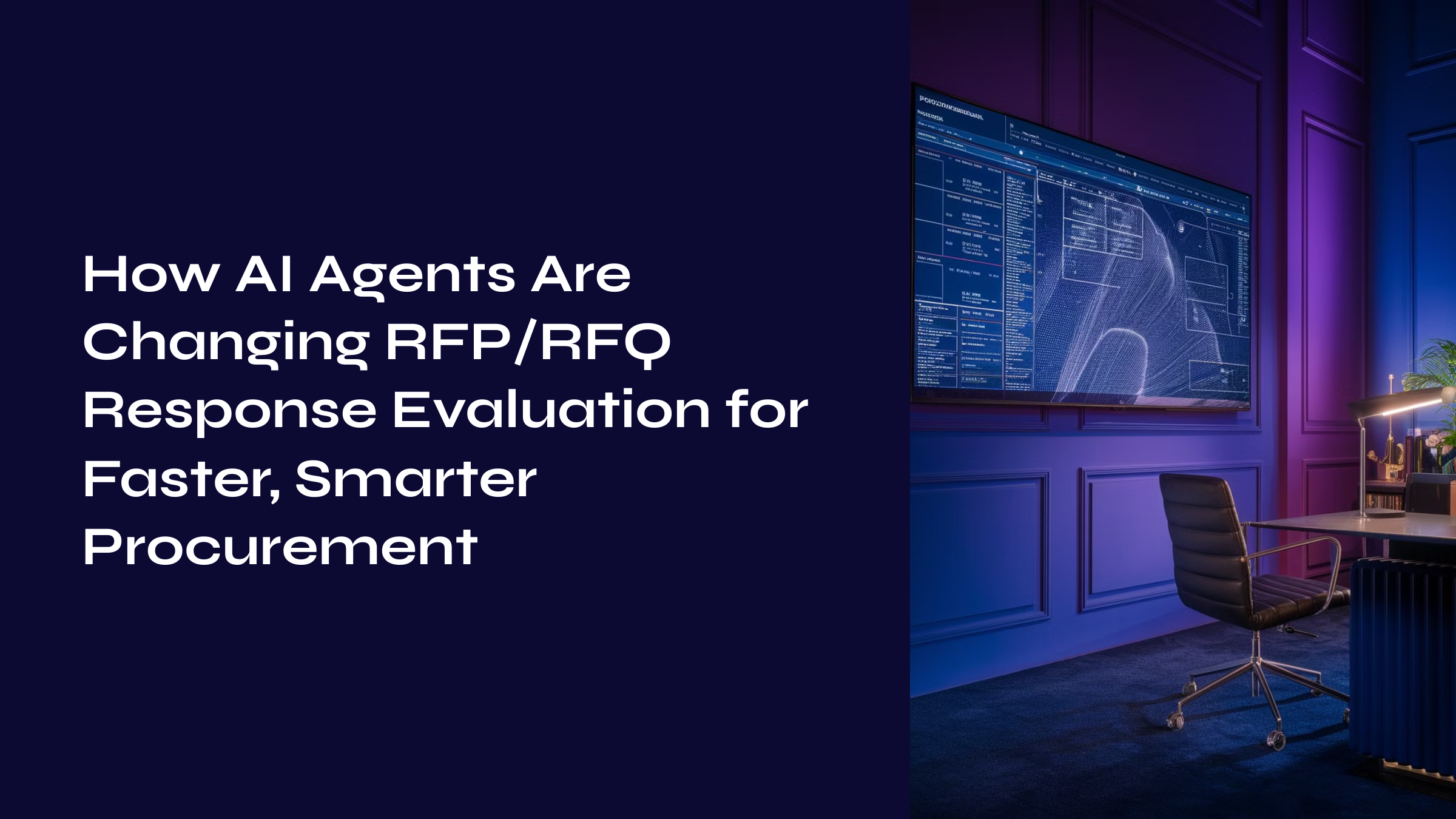What is Agentic AI?
Agentic AI refers to a type of artificial intelligence system designed to perform tasks autonomously, make decisions based on data, and execute actions without the need for constant human oversight. Unlike traditional AI systems that require human input at each step, Agentic AI functions as an intelligent agent capable of interacting with its environment, analyzing information, and acting independently. For example, an email filtering system powered by Agentic AI automatically sorts incoming messages into categories such as “Work,” “Spam,” or “Personal” based on their content. Over time, it learns from how the user interacts with emails, improving its sorting accuracy, all without human intervention.
These systems continuously learn, adapt, and improve their performance based on their experiences and feedback from the environment, making them highly efficient for repetitive tasks or operations that require real-time decision-making. The core concept of Agentic AI is its autonomy. It’s designed to operate and solve problems on its own, utilizing advanced algorithms like machine learning and deep learning to enhance its understanding and decision-making capabilities. From automating business processes to making data-driven decisions, Agentic AI helps streamline operations, reduce errors, and improve overall efficiency.
The Evolution of Agentic AI Systems
The journey of Agentic AI has been marked by significant milestones that have brought it closer to mimicking human intelligence. Here’s a timeline of its evolution:
- Early AI and Automation:
Early AI systems were mainly rule-based, meaning they could only follow a strict set of instructions defined by developers. These systems were highly rigid and required constant human supervision. - Machine Learning (ML):
With the advent of machine learning, AI systems gained the ability to learn from data. Instead of following predefined rules, these systems could now recognize patterns, predict outcomes, and make informed decisions based on past experiences. This was a big leap, allowing AI to become more adaptive and versatile. - Deep Learning and Neural Networks:
The introduction of deep learning and neural networks allowed AI to process more complex data, such as images, sounds, and text. These advancements enabled AI to take on even more intricate tasks and operate at a level closer to human cognitive processes. - Agentic AI – Autonomous Decision-Making:
Today’s Agentic AI systems represent a major leap forward. Unlike early AI systems that needed constant input and supervision, Agentic AI can make independent decisions and carry out tasks without human intervention. These systems can learn from their environments, adapt to new challenges, and execute tasks based on the data available, making them particularly useful in business operations like process automation, customer service, and data analysis.
How Does Agentic AI Work?
Agentic AI works by using a combination of data collection, analysis, decision-making, and execution. Here’s a simplified breakdown of how it functions:
- Data Collection:
The first step in the Agentic AI process is gathering relevant data. This could be from a variety of sources, such as databases, sensors, customer interactions, or market trends. The more data the AI has, the better it can understand the situation and make informed decisions. - Data Analysis and Pattern Recognition:
After collecting the data, Agentic AI uses machine learning algorithms to analyze it. The AI looks for patterns and trends in the data to understand what’s happening and predict what might happen next. This allows it to make decisions based on historical data, real-time inputs, and past experiences. - Decision-Making:
Based on the analysis, the AI decides what action to take. The decisions can vary from recommending a course of action to actually executing the task. The AI uses predefined rules or learned patterns to choose the best solution. - Execution and Action:
Once a decision is made, Agentic AI performs the necessary actions to execute the solution. For example, it might send an email, update a database, or trigger an event in a system. These actions are all carried out autonomously, without requiring human intervention. - Feedback and Learning:
The final step is feedback. After taking action, the AI receives feedback on the outcome. It evaluates whether the decision was successful and uses this feedback to improve its performance in the future. This process of continual learning helps the AI become smarter and more efficient over time.
Applications of Agentic AI
Agentic AI is increasingly being used across various industries to improve efficiency, reduce human error, and accelerate decision-making. Here are some common applications:
- Finance and Accounting:
Agentic AI can be used to automate financial tasks such as account reconciliations, financial reporting, and audit trail generation. It can analyze large sets of data, identify discrepancies, and create accurate financial reports without manual input. - Customer Service:
AI-powered virtual assistants and chatbots can handle customer inquiries, resolve complaints, and provide personalized support. By automating repetitive customer service tasks, businesses can provide quicker responses and reduce wait times. - Healthcare:
In healthcare, Agentic AI helps with patient data analysis, predictive healthcare management, and automated administrative tasks. For example, it can track patient health trends, suggest potential treatments, and help with medical billing and claims processing. - Supply Chain Management:
AI systems can optimize supply chain operations by predicting demand, managing inventory, and automating procurement processes. This helps companies maintain efficient operations, avoid stockouts, and reduce waste. - Human Resources:
In HR, Agentic AI can assist with candidate screening, onboarding, and employee performance evaluations. By automating administrative tasks, HR departments can focus on more strategic activities such as employee development.
Architecture of Agentic AI Systems
The architecture of Agentic AI systems is designed to enable autonomy, adaptability, and continuous learning. It integrates multiple layers of technology that work together to gather data, process it, make decisions, execute actions, and learn from feedback. Let’s break down the key components of Agentic AI architecture.
1. Autonomous Agents
At the heart of Agentic AI is the autonomous agent—the entity that carries out tasks and makes decisions. These agents are designed to be goal-oriented, which means they are programmed to achieve specific outcomes, such as optimizing workflows, improving customer satisfaction, or reducing errors in financial reconciliations.
The agents are equipped with:
- Decision-making capabilities: Powered by algorithms like decision trees, reinforcement learning, or neural networks, these agents can process data and make informed decisions.
- Self-learning features: Agents can learn from experience, adapting their strategies based on new data or outcomes from past actions.
- Behavior modeling: Agents are often designed with behavior models that define how they should act in different contexts or scenarios. These models evolve as the agent gains more experience.
2. Data Collection and Integration Layer
For any AI system to work, it must first have access to data. The data collection and integration layer gathers information from various sources—whether structured (like databases) or unstructured (like documents and images). This data is cleaned, preprocessed, and transformed into a format that is suitable for analysis.
This layer ensures that the agent has the necessary data to make informed decisions. For example, an autonomous agent handling accounts payable might access invoice records, payment logs, and historical transaction data to reconcile accounts.
- Data Ingestion: The system can ingest data from various systems, such as ERP or CRM software, web scraping tools, and sensors, ensuring that data from multiple sources can be aggregated.
- Data Standardization: It ensures that data is converted into a standardized format so it can be used effectively by the agent.
- Data Enrichment: This layer may also involve enriching data by pulling in additional information to enhance decision-making (e.g., pulling stock market trends for financial forecasting).
3. Decision-Making and Processing Layer
The decision-making and processing layer is where the magic happens. This is where the data is analyzed, decisions are made, and the agent decides on the best course of action.
Key technologies in this layer include:
- Machine Learning Algorithms: These algorithms allow the agent to learn from data, identify patterns, and make predictions. The agent uses these insights to make decisions or optimize tasks.
- Natural Language Processing (NLP): For text-heavy tasks like customer service, NLP enables the agent to interpret and understand human language. This allows the agent to process customer emails, conversations, and requests.
- Reinforcement Learning: In more advanced systems, agents use reinforcement learning to improve their performance over time by learning from feedback. For example, a financial agent could learn from its actions, such as making better decisions when reconciling accounts or predicting future financial trends.
4. Execution Layer
Once a decision is made, the execution layer translates the agent’s decision into action. This is where the agent interacts with the environment to perform a task, such as updating a database, sending an email, or triggering a workflow.
For example, if an accounts payable agent decides that an invoice is overdue, it can automatically trigger a payment request or notify the relevant team. In the case of customer service, the execution layer could send a follow-up email or alert the human support team.
5. Continuous Learning and Feedback Loop
The final layer of the architecture is the continuous learning layer, which allows the system to adapt to new situations and improve over time.
- Model Updating: Based on feedback and new data, the models used by the agents can be retrained and fine-tuned to improve performance.
- Behavior Adaptation: The agent’s behavior can also evolve, allowing it to adjust to changing conditions or new objectives. For example, if an agent’s previous actions are deemed ineffective, it will modify its decision-making strategy.
Guiding Principles of Agentic AI Architecture
The design and implementation of Agentic AI are guided by several key principles that help ensure its effectiveness and efficiency:
1. Autonomy:
At the core of Agentic AI is its ability to perform tasks autonomously. These systems can make decisions and execute actions without requiring continuous human input, ensuring that processes continue without disruption.
2. Adaptability:
Agentic AI must be capable of adapting to new situations. As it learns from data and feedback, it improves its processes, making it a valuable asset for organizations that require scalability and flexibility in their operations.
3. Efficiency:
Efficiency is a critical factor in AI design. Agentic AI systems must be optimized for speed and accuracy, enabling real-time decision-making. For example, an AI system designed for financial reconciliation must quickly process transactions and detect discrepancies, without human intervention.
4. Transparency:
For businesses to trust and adopt AI solutions, transparency is essential. The decision-making processes of Agentic AI should be understandable, allowing businesses to see how and why certain decisions were made.
5. Security and Compliance:
Security is a top priority when integrating AI systems into business operations, especially when dealing with sensitive data. Agentic AI architecture must ensure that the system complies with data privacy regulations, such as GDPR or HIPAA, and has the necessary security measures in place to protect data.
Customizing and Integrating Agentic AI
One of the significant advantages of Agentic AI is its ability to be customized and integrated into existing business processes. This customization ensures that AI solutions are aligned with the specific needs of an organization, whether it’s automating account reconciliation, streamlining customer service, or optimizing inventory management. Here’s how businesses can go about this:
1. Assess Business Needs:
The first step is to assess the specific business processes that could benefit from automation and intelligent decision-making. For example, an organization struggling with manual financial reconciliation could implement Agentic AI to automate the process, reducing errors and speeding up reporting cycles.
2. Choose the Right Platform:
Once the needs are identified, businesses must choose the right AI platform for integration. Platforms that offer pre-built AI capabilities for specific functions like financial reconciliation or customer support automation can be integrated into existing enterprise systems such as ERP or CRM.
3. Seamless Data Integration:
For Agentic AI to function effectively, it must be able to pull data from various sources. This requires integrating AI systems with databases, cloud platforms, and legacy systems. Data connectors and APIs are commonly used to ensure smooth integration.
4. AI Training and Deployment:
The AI needs to be trained using historical data to understand patterns and make intelligent decisions. This involves training the AI model with accurate, clean, and relevant datasets. Once trained, the system is deployed into production, where it can begin processing real-time data.
5. Ongoing Monitoring and Optimization:
Even after deployment, businesses must continuously monitor the performance of the AI system. Feedback loops and performance metrics help identify areas for improvement, ensuring that the AI system continues to evolve and meet business needs.
The Future of Agentic AI
As AI technology continues to evolve, the future of Agentic AI holds exciting possibilities. These systems will become even more autonomous, with the ability to make decisions in increasingly complex environments. Here are some predictions for the future of Agentic AI:
- Smarter Decision-Making: With advancements in deep learning and reinforcement learning, Agentic AI will become capable of making more sophisticated decisions, handling more complex tasks, and adapting to unpredictable environments.
- Increased Human-Machine Collaboration: Future AI agents will work alongside humans, enhancing productivity and enabling real-time collaboration. Human workers will be able to leverage AI to handle routine tasks while focusing on more strategic decision-making.
- Ethical AI: As businesses adopt AI at scale, ethical considerations around AI decision-making will take center stage. The future will see a focus on ensuring AI systems are fair, transparent, and free of bias.
- AI-Driven Innovation: Agentic AI will also drive innovation by helping businesses analyze vast amounts of data, identify trends, and automate R&D processes, enabling companies to launch new products and services faster.
Conclusion
Agentic AI is revolutionizing industries by introducing autonomous, intelligent systems capable of decision-making and task execution without human intervention. As AI continues to evolve, these systems will become even more sophisticated, driving innovation, efficiency, and accuracy across various business functions. Whether it’s automating customer service, streamlining supply chains, or optimizing financial operations, Agentic AI is a powerful tool that can help businesses stay ahead in a competitive landscape.
Want to learn more about how Agentic AI can transform your operations?
Connect with our experts to discover how Agentic AI can be seamlessly integrated into your business strategy. Visit advansappz for more details and take the first step in your AI journey today!
Frequently Asked Questions (FAQs)
- What is Agentic AI, and how is it different from traditional AI systems?
Agentic AI refers to autonomous AI systems capable of making independent decisions and performing tasks with minimal human input. Unlike traditional AI, which often requires human oversight, Agentic AI continuously learns and adapts to improve decision-making. - What are the primary benefits of implementing Agentic AI in business?
Agentic AI can help businesses increase efficiency, reduce errors, speed up decision-making, and optimize operations. It provides significant time and cost savings while ensuring accuracy and scalability. - How can businesses integrate Agentic AI into existing systems?
Businesses can integrate Agentic AI by assessing their operational needs, choosing the right platform, ensuring seamless data flow, and continuously monitoring AI performance to ensure it delivers optimal results. - Can Agentic AI be customized to suit specific business needs?
Yes, Agentic AI systems are highly customizable. Businesses can tailor AI agents to automate specific processes, such as financial reconciliations, customer service, or inventory management. - What does the future hold for Agentic AI?
The future of Agentic AI includes smarter decision-making capabilities, enhanced human-machine collaboration, and a focus on ethical AI practices. As AI continues to evolve, it will become even more capable of tackling complex tasks and driving innovation in businesses.
















